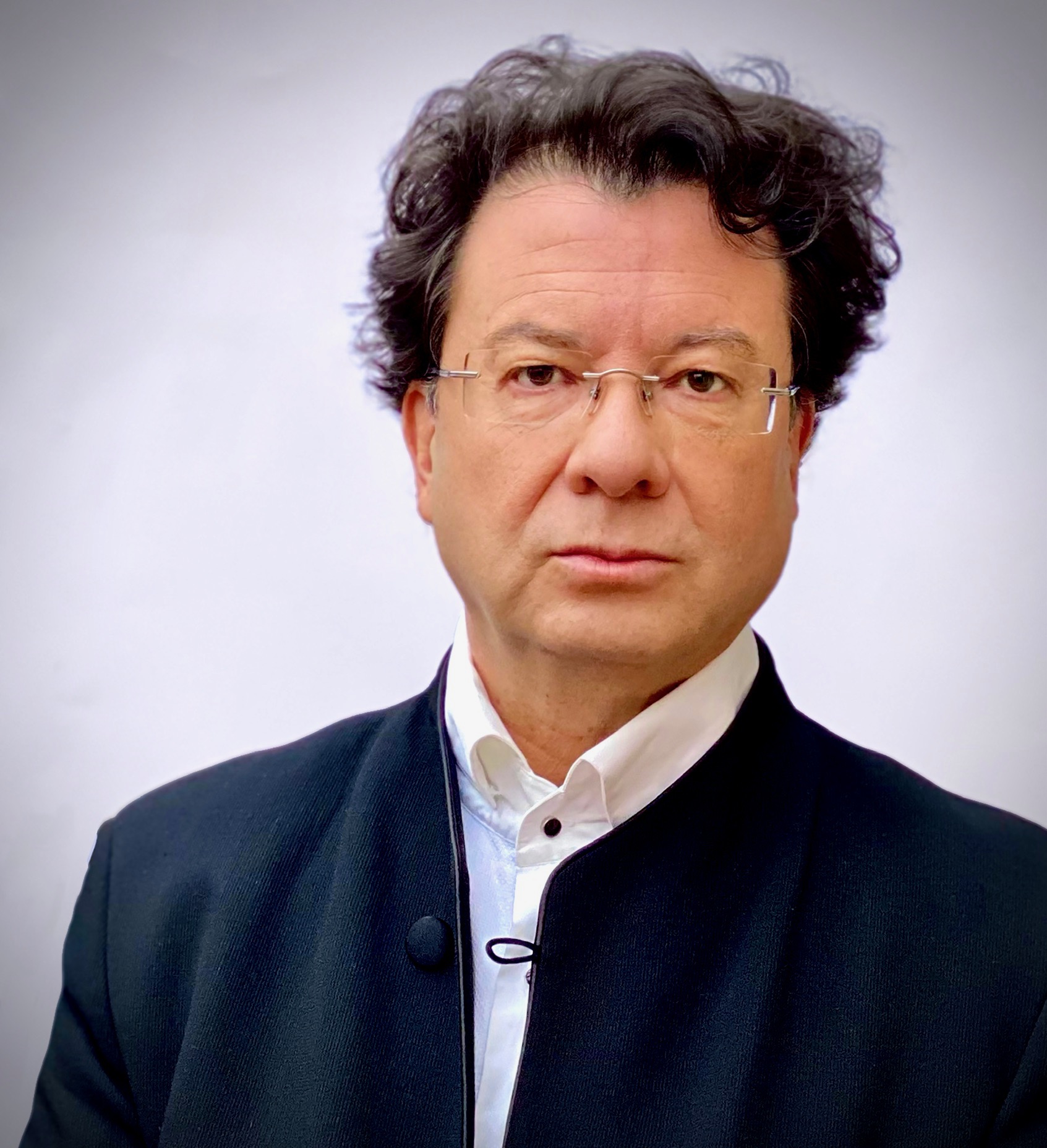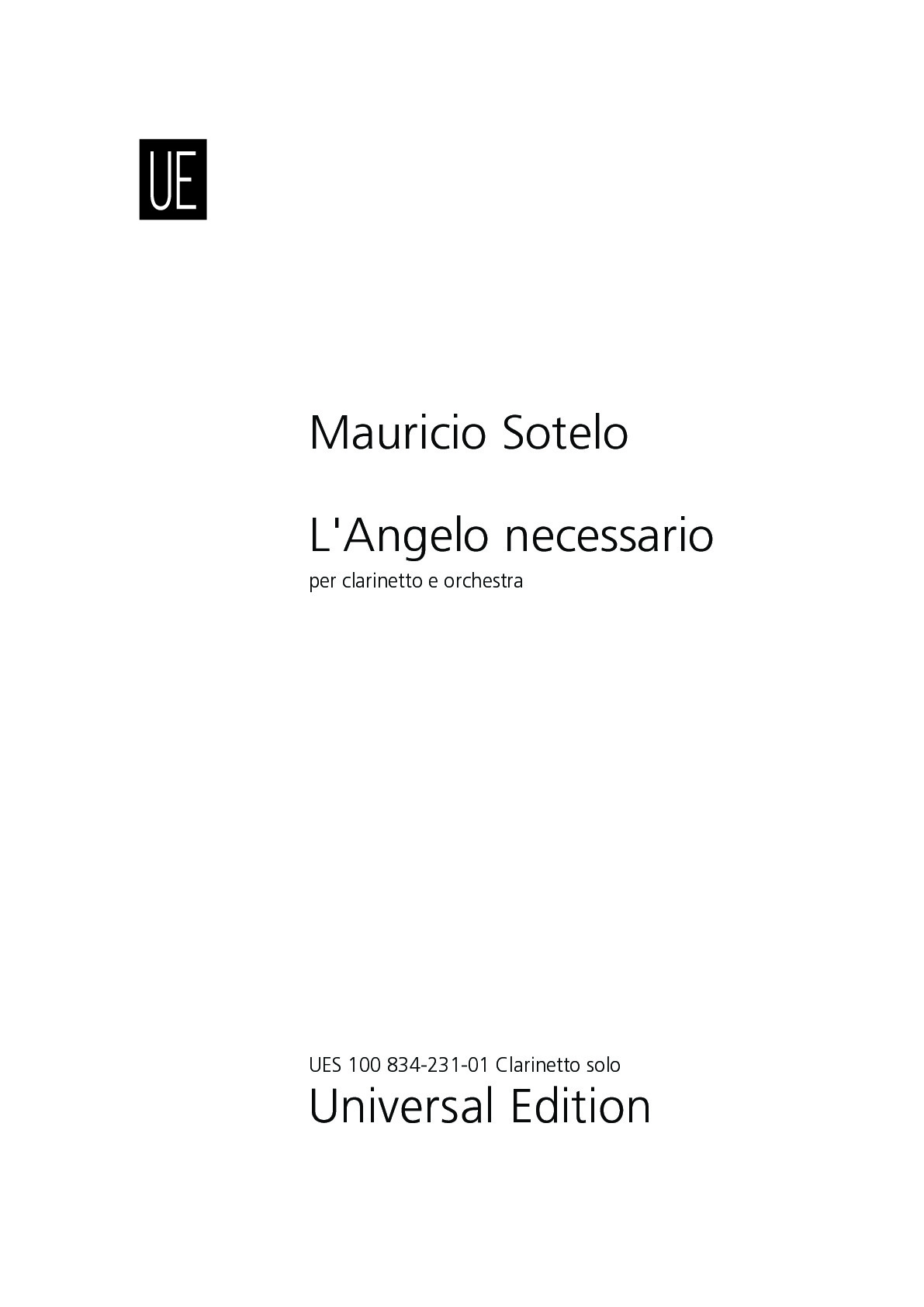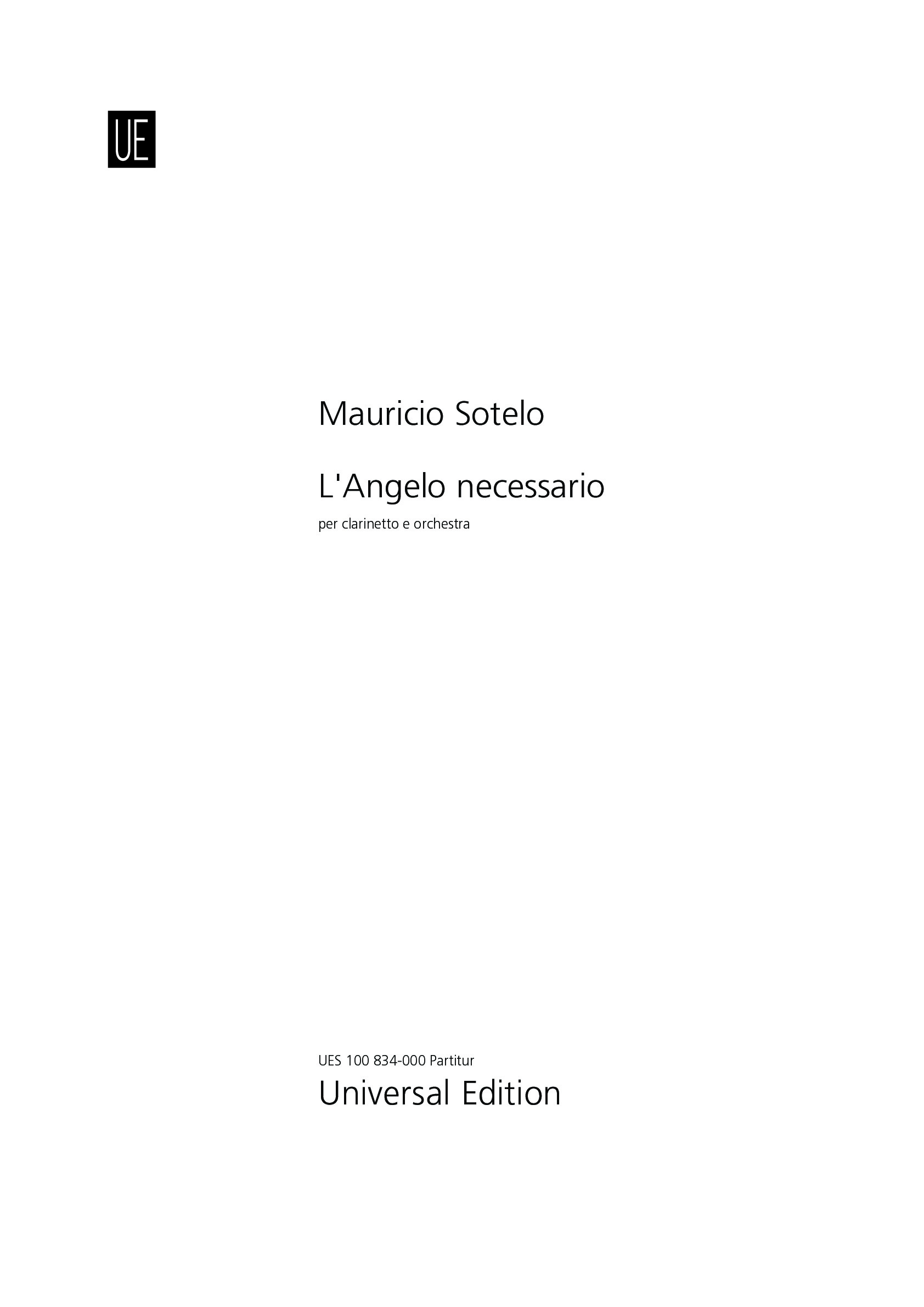

Mauricio Sotelo
L'Angelo necessario
Short instrumentation: 3 2 2 3 - 4 2 3 1, timp, perc, hp, str
Duration: 16'
Solos:
clarinet in Bb
Instrumentation details:
1st flute
piccolo
2nd flute
1st oboe
2nd oboe
1st clarinet in Bb
2nd clarinet in Bb
1st bassoon
contrabassoon
2nd bassoon
1st horn in F (2 players)
2nd horn in F (2 players)
1st trumpet in C
1st trumpet in C
trombone (2 players)
bass trombone
contrabass tuba
timpani
percussion
harp
violin I (12 players)
violin II (10 players)
1st viola (2 players)
2nd viola (6 players)
1st violoncello (2 players)
2nd violoncello (2 players)
3rd violoncello (2 players)
double bass (4 players)
L'Angelo necessario
Printed/Digital
Translation, reprints and more

Mauricio Sotelo
1. Klarinette in B (Der notwendige Engel)Type: Solostimme(n)

Mauricio Sotelo
Der notwendige EngelOrchestration: für Klarinette und Orchester
Type: Dirigierpartitur
Sample pages
Work introduction
The choice of Beethoven's fourth symphony as a space of inspiration for my work has, in the first place, an affective component –as it is one of my favourite symphonies and also the one that I studied the most in Vienna in the conducting class–, as well as an analytical element that as a composer has always fascinated me. It is about how Beethoven weaves, from the first bars, harmonic matter, formal structure and the expressive-affective universe. Note here the figuration of the line of the introduction in Bb minor with the jump of the minor sixth (Bb - Gb) in the fifth measure –with the indication of crescendo and diminuendo (messa di voce) on the note Gb, highly expressive–, as well as the 'tonale Rückung', 'tonal reversal', on B natural –B / H– C flat, which differentiates the second group from the first –we can undoubtedly speak here of the Neapolitan second interval–, the appearance in pianissimo of the A major chord in measure 34 and the subsequent 'eruption' in fortissimo of the F major chord –as the dominant of Bb major– in which it already introduces an ascending scale, a powerful impulse characteristic of the beginning of the song of the 'Allegro vivace'. All these elements are present in the design of the melodic line that in the voice of the solo clarinet opens our own composition L'Angelo necessario –I must clarify that it is born in my mind like a dream, like a voice already sung inside me –this as well as in the formal structure and the subsequent compositional development. All these components will be organized or revealed during the time of the composition as an intuition."The truth is simply given, aplós, not mediated by our ability to represent, but as if suddenly understood" writes the Italian philosopher Massimo Cacciari in a powerful and revealing essay published in February 1986 by Adelphi Edizioni, whose title I borrowed for the work we are listening to today. "It could be said that analogic-symbolic intuition of the universe (...) and polyphonic music are the names of a single Principle”. This composition is, without any doubt, an offering to Beethoven, a figure that has accompanied me all my life since I was a child (when I was sleeping I thought I heard the poster that hung on one of the walls of my bedroom breathe), as well as a tribute of gratitude to Massimo Cacciari, whose precious collaboration has been fundamental in the composition of the libretto for my opera: 'Bruno o il Teatro della memoria'.
